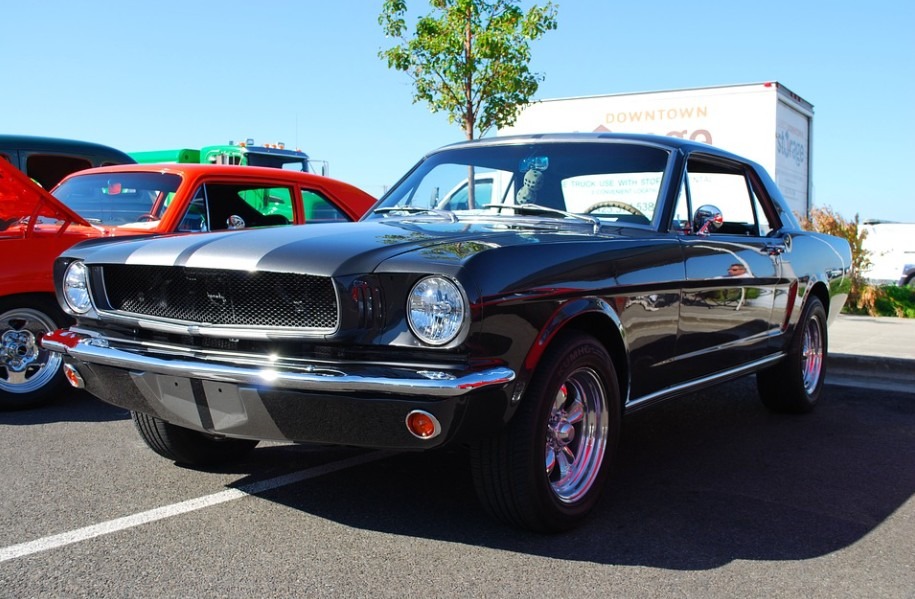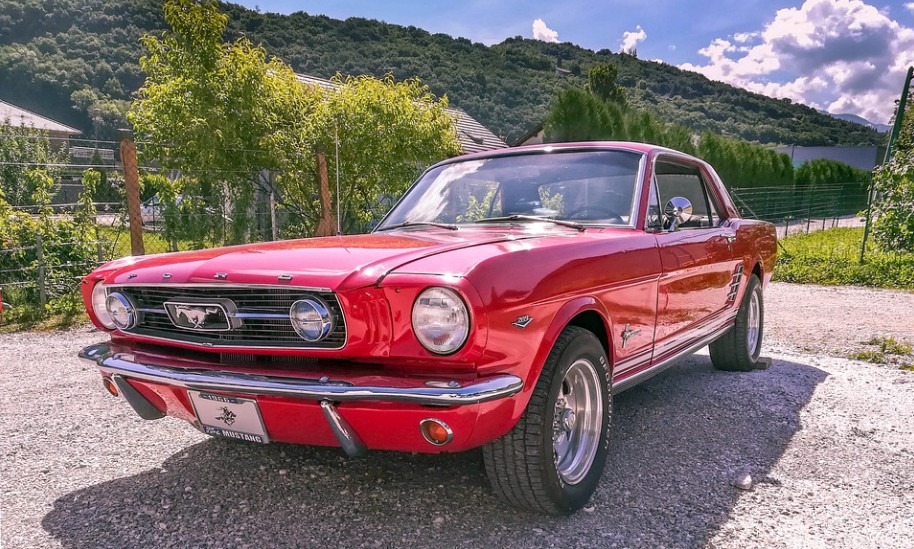If there is one iconic vehicle that many car enthusiasts would recognize from afar, that car would be the Ford Mustang. The Ford Mustang, also known as the Ford T5, is a series of American vehicles that the Ford Motor Company began manufacturing in March 1964. Because of the widespread popularity of the Ford Mustang, many of Ford’s competitors started replicating the design of the vehicle, and this trend eventually led to the creation of the car classification called “pony car,” which is supposed to be a line that brings performance-focused and sporty features to relatively affordable vehicles. The Mustang is one of the best cars made in the 1960s.
The Ford Mustang is the longest-produced car that Ford has ever made, and as of 2021, the series is not in its sixth generation and is still quite popular among drivers and car collectors. However, its success wouldn’t be as big today if it weren’t for the creation of the first generation of Mustangs, which is considered to be the most sought-after in the resale market. Why is the first-generation Mustang so popular? We will know the answer as we get a closer look at the history of the first-generation Ford Mustang.
The Mustang’s Name
There are two well-known theories as to where the Mustang name originated. The first theory was that John Najjar, who worked as an executive stylist for Ford in the 60s, was the one that suggested the name because he was a fan of the P-51 Mustang fighter plane that was used during World War II. It was also Najjar that designed the first Mustang prototype with another Ford stylist named Philip T. Clark. The prototype, which was named the Ford Mustang I, was produced in 1961 and was first shown at the United States Grand Prix in New York on October 7. 1962. During the said race, the prototype was test-driven by experienced Formula One racer Dan Gurney.
The second theory of where the Mustang name came from starts with Robert J. Eggert, Ford’s then-market research manager, who was known to be a breeder of quarter horses. During one of his birthdays, his wife gifted him a book that was titled “The Mustangs,” which was written and published by American folklorist J. Frank Dobie in 1960. The title of the book then gave him the idea to name the latest concept car that Ford was working on during that time as the “Mustang.”
Before the “Mustang,” there were also other names that were considered for the new concept car, including the Torino, the Cougar, and Henry Ford’s preferred name, the T-Bird II. Eventually, the “Mustang” was chosen to be the official name for the new vehicle. Unfortunately, the “Mustang” name could not be used in Germany from the 60s up to the 70s, as a company called Krupp owns the rights to “Mustang,” which they used as the name for the trucks they manufactured from 1951 to 1964. Because Ford refused to buy the right from Krupp for about $10,000, the Mustang was called the “T5” in Germany from 1964 to 1978.
Mustang Concept Cars
The development for the first generation Mustang began in 1962 when assistant general manager Lee Iacocca and chief engineer Donald N. Frey served as the leaders of the T5 project. The entire development process only took the team 18 months to finish, which is amazing since development for vehicles can last for two years or more. The T5 prototype that the team managed to build in 1962 was a two-seat roadster with a mid-mounted Ford Taunus V4 engine.
The 1962 prototype was then transformed into the 1962 Mustang II prototype, which was a four-seater concept car that was supposed to test how the public would react to the series. The final prototype and concept car, the Mustang III, was produced in 1963 and had similar features to the production model, with the front and rear ends being 2.7 inches lower than the first two concept cars.
First Production Models
The first production models for the Ford Mustang were produced five months before the beginning of the planned 1965 production. Because they weren’t officially a part of the planned batch, these first Mustangs were called by collectors as the “1964 1/2 models,” although Ford called them the 1965 models when they were sold, even though they were made in 1964. The production was conducted in Dearborn, Michigan, and began on March 9, 1964. On April 17, 1964, the Mustang production model was officially unveiled to the public at the New York World’s Fair.
When the Mustang was first sold, it had an advertised list price of $2,368. In order to achieve this relatively affordable price, the Mustang was built using simple parts that were already being used for other Ford models. Most of the interior components utilized for the Mustang were derived from the ones installed on the Ford Falcon and the Ford Fairlane. Because the Mustang is already installed with preexisting parts, the production for the vehicle was easier and faster. In addition, repairs for the Mustang were also cheaper, as mechanics are already familiar with the parts that they need to fix.
In terms of sales, the Mustang was projected to sell only 100,000 units in 1964, but they have already sold more than that in just three months after the release of the model. Then, in 1965, they were able to sell 318,000 units, and by the middle of 1966, they sold more than 1 million Mustangs.
The End of the Mustang I
Besides the standard production model, Ford also manufactured limited-edition models for the Mustang, including the Mustang Mach 1 (a performance-focused model that was introduced in 1968), Mustang Boss 302 (produced from 1969 to 1970), and the Mustang Boss 429 (also produced from 1969 to 1970). Due to popular demand, the Mustang Mach 1 would return several times, particularly in 2003, 2004, and 2021.
The first-generation Ford Mustang would continue being produced until 1974, when Lee Iacocca, who was promoted to President of Ford Motor Company four years before, gave his team the task to develop a fuel-efficient Mustang. The new Mustang, aptly named Mustang II, was introduced on September 21, 1973, to serve as a successor to the Mustang I and as a suitable vehicle for people that are affected by the 1973 oil crisis.
Even though the Mustang is in its sixth generation as of 2021, the first generation of the model is still regarded by many as one of the greatest cars ever made. Luckily, the first-generation Mustang doesn’t have a high resell price compared to other rare and highly sought-after cars, so most of us will get a chance to own and drive one.


